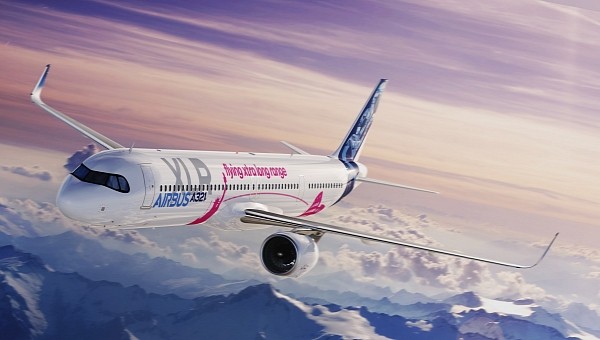While some of us are already dreaming about summer vacations, a huge testing group spent four challenging days at Iqaluit, in northern Canada. It wasn’t for fun, but for making sure that the new long-range monster built by Airbus can operate smoothly even in the roughest weather conditions.
When you’re nicknamed The Route Opener, expectations are obviously high. XLR stands for Xtra Long Range Performance, and this is what the latest addition to the A321 family promises. The A321neo was a game-changer that paved the way for new possibilities in terms of range.
The A321XLR was designed to take things even further, mostly through a combination of increased fuel capacity (16,000 liters) with a higher MTOW (maximum take-off weight – 101 tons).
The result? This next-generation airliner claims the ability to fly non-stop for 11 hours, covering up to 4,700 nautical miles (8,704 km). This makes it a 15% longer range than the A321neo, coupled with impressive fuel savings (30% less per seat, compared to previous generations).
In other words, the A321XLR is able to operate like a single-aisle airliner (in terms of financial costs) while covering the extensive routes of typical widebody aircraft.
Towards the end of last year, Airbus first announced that it was going to use four flight-test A321XLR aircraft for a comprehensive testing campaign. The first one had started to be assembled back in 2021, and completed its maiden flight in 2022.
Two more were also completed by the end of that year, and the fourth testbed would actually be an A321neo, fitted with some of the A321XLR’s features.
Earlier this year, the so-called FT2 underwent cold-temperature testing at Iqaluit, in northern Canada, with a main focus on hydraulics. This week, it was another test aircraft’s turn to tackle the cold-weather challenge. This time, it was the FT3, and attention moved to the aircraft cabin.
For several days, the A321XLR development aircraft had to go through multiple “cold soaks.” After that, the water and waste systems were tested in various heating and insulation configurations.
The testing team (comprised of over 30 people) had to make sure that the future long-range airliner’s standard configuration can withstand challenging climates, but it also tested an additional “cold weather option.” This package for extra insulation and heaters will be available for future operators, and this was the first time when it was tested in a real cold-weather environment.
The future A321XLR (which is aiming for a 2024 commercial launch) will pave the way for new non-stop flight routes, such as Sydney-Kuala Lumpur, New York-Rome, and Delhi-London. And it plans to do in great comfort for all passengers, thanks to the Airspace cabin concept, boasting more space, the latest-generation in-flight entertainment, and top-notch connectivity.
The A321XLR was designed to take things even further, mostly through a combination of increased fuel capacity (16,000 liters) with a higher MTOW (maximum take-off weight – 101 tons).
The result? This next-generation airliner claims the ability to fly non-stop for 11 hours, covering up to 4,700 nautical miles (8,704 km). This makes it a 15% longer range than the A321neo, coupled with impressive fuel savings (30% less per seat, compared to previous generations).
In other words, the A321XLR is able to operate like a single-aisle airliner (in terms of financial costs) while covering the extensive routes of typical widebody aircraft.
Towards the end of last year, Airbus first announced that it was going to use four flight-test A321XLR aircraft for a comprehensive testing campaign. The first one had started to be assembled back in 2021, and completed its maiden flight in 2022.
Two more were also completed by the end of that year, and the fourth testbed would actually be an A321neo, fitted with some of the A321XLR’s features.
Earlier this year, the so-called FT2 underwent cold-temperature testing at Iqaluit, in northern Canada, with a main focus on hydraulics. This week, it was another test aircraft’s turn to tackle the cold-weather challenge. This time, it was the FT3, and attention moved to the aircraft cabin.
For several days, the A321XLR development aircraft had to go through multiple “cold soaks.” After that, the water and waste systems were tested in various heating and insulation configurations.
The testing team (comprised of over 30 people) had to make sure that the future long-range airliner’s standard configuration can withstand challenging climates, but it also tested an additional “cold weather option.” This package for extra insulation and heaters will be available for future operators, and this was the first time when it was tested in a real cold-weather environment.
The future A321XLR (which is aiming for a 2024 commercial launch) will pave the way for new non-stop flight routes, such as Sydney-Kuala Lumpur, New York-Rome, and Delhi-London. And it plans to do in great comfort for all passengers, thanks to the Airspace cabin concept, boasting more space, the latest-generation in-flight entertainment, and top-notch connectivity.







